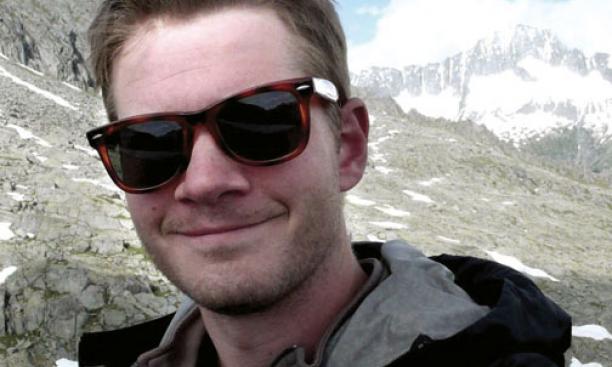

THE FACILITY A world-class laboratory in Princeton’s geosciences department can pinpoint the age of rocks that are billions of years old. The radiometric geochronology lab, one of fewer than a dozen such labs worldwide, has a
3-ton, $700,000 thermal ionization mass spectrometer, the most precise tool for dating rocks available. Located in Guyot Hall, the lab, which opened in April, may help shed light on the evolution of life on Earth, the causes of mass extinctions, and why the Earth looks the way it does.
The equipment works on rocks with a high level of uranium. To determine a rock’s age, a sample is crushed in a machine and high-uranium minerals are separated from the crushed rock, picked out under a microscope, and dissolved in acid. After uranium and lead are extracted from the minerals, the sample is heated to 1,400 degrees Celsius to generate lead and uranium ions, and the ratio of lead to uranium is calculated. Because lead is a key measurement in the samples, the lab’s air must be kept lead-free, so ultra-pure air is pumped in.

THE SCIENTIST The lab is the brainchild of Assistant Professor Blair Schoene (pronounced “Shay-NEE”), who joined the faculty in 2009. Schoene grew up in Seattle, where his love of hiking and climbing prompted him to wonder: How long did these mountains take to form? How long will they be here? Schoene’s research has taken him to the Alps, Swaziland, and Australia to map rock formations and chisel samples from the earth. Out in the field “is where all the interesting questions begin,” he said. Determining when rocks formed helps geoscientists to track the duration of major events, such as mass extinctions, which is critical to understanding Earth’s history.
RESEARCH AT THE LAB Graduate students and postdoctoral fellows currently are conducting research, and undergraduates will be able to undertake thesis projects there starting next year. The lab also creates opportunities for Princeton geoscientists to collaborate with scientists worldwide. Schoene is working with professors at Caltech on dating samples that could shed light on the period when the atmosphere gained oxygen and made animal life possible, 2.4 billion years ago.
